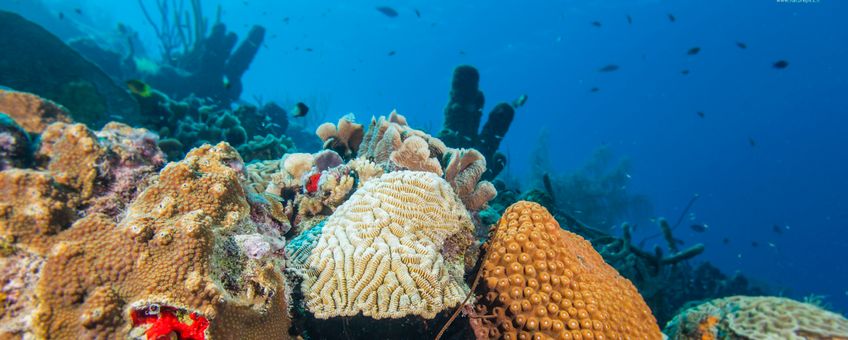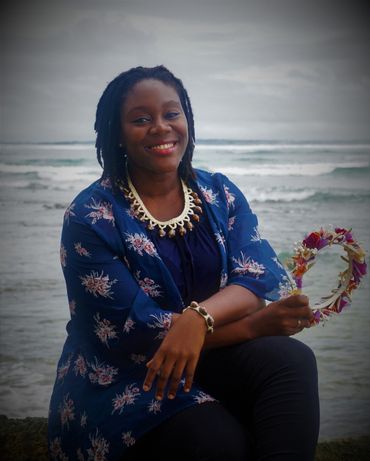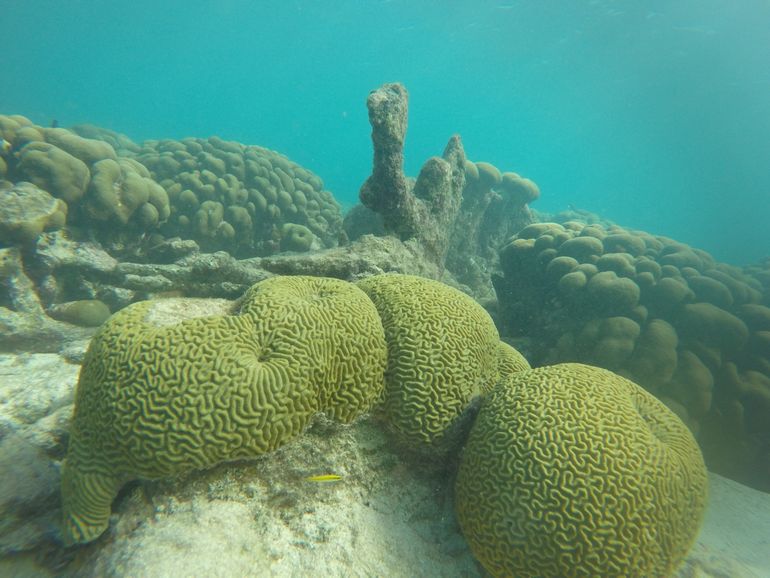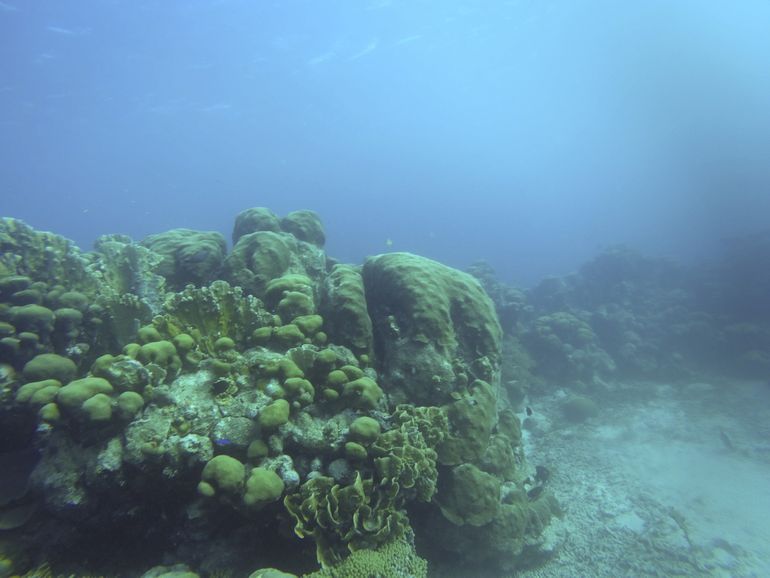
Population structure and connectivity of reef-building corals in the Southern Dutch Caribbean
Dutch Caribbean Nature Alliance (DCNA), KU Leuven, University of ArubaCoral reefs are among the most diverse and productive communities in the marine environment. Particularly in the tropics, they are an iconic ecosystem since they are hotspots for biodiversity, attract major tourism, provide employment for many locals, and represent the complex nature of the marine environment. Hermatypic corals, also known as reef-building corals, are the basic building blocks of tropical coral reefs. The growth of these reef-building corals and the distribution of coral reefs are strongly influenced by the physical environment.
Coral reef reproduction
Hermatypic corals can reproduce asexually, where they produce genetically identical clones of themselves, leading to the production of massive skeletons that collectively form the limestone framework of tropical reefs.
Corals also reproduce sexually, whereby they create genetically new individuals from the combination of male and female gametes (eggs and sperm) produced by different parental colonies. New genotypes and slight variations over many generations can lead to adaptations to resist the susceptibility of corals to stressors such as disease, increased temperatures and pollution.
There are two ways corals can sexually reproduce. There are so called ‘broadcast spawners’ and ‘brooders’. Broadcast spawners release eggs and sperm into the water column and the fertilization and larval development occur in the water column. Other species of corals are brooders, which undergo internal fertilization and release their offspring as larvae.
Factors such as mode of sexual reproduction of coral species (whether they are ‘brooders’ or ‘broadcast spawners’), currents and coastal zone habitat influence the distance, direction and extent of coral larvae (planulae) dispersal as well as the eventual success of coral larvae to settle to the ocean floor and grow into adult corals (recruitment). The successful reproduction, connectivity (or the exchange of planulae between reefs) and recruitment of planulae is fundamental to coral reef health and development and this is directly linked to the abundance and fitness of other marine organisms that depend on them for their survival. The magnitude of environmental change that is occurring within the Caribbean region as well as globally is considerable, and solutions will require investigating how populations of corals are connected as well as understanding how the interaction between genotype (organism's set of heritable genes) and environment (seascape) and external stressors impact coral larvae dispersal.
Scientific investigation
Therefore, the goal of this research project is to link the spatial arrangement of hermatypic coral species to connectivity and population structure between the islands that make up the southern Dutch Caribbean (Aruba, Bonaire and Curacao). This study will also compare the extent of planular dispersal between reproductive modes of corals using the brooding mustard hill coral (P. astreoides) and the symmetrical and broadcast spawning grooved brain corals (P. strigosa and D. labyrinthiformis) as the study species.
To trace the movement and connectivity of these microscopic coral planulae across the vast southern Caribbean Sea the researchers will primarily use genetic approaches and analyses. Molecular tools such as microsatellite markers will be used to identify and examine the genotypes of the corals of study and allow us to thereby establish distinct relationships among coral individuals and the distance that separates them.
This study is part of the Sustainable Island Solutions through Science, Technology, Engineering and Mathematics (SISSTEM) project at the Universiteit van Aruba. Diana Melville, PhD Candidate of the KU Leuven and University of Aruba, is the lead scientist supervised by drs. Eric Mijts, University of Aruba and Prof. Filip Volckaert, Laboratory of Biodiversity and Evolutionary Genomics, KU Leuven, Leuven, Belgium.
Research questions
The researchers will try to get an answer on the following questions. Are corals on the ABC islands genetically related to each other? Which populations are the main source of progeny? What is the role of environmental factors and biological traits in shaping connectivity? Are coral populations adapted to the shifting environment?
The ABC Islands
 The three islands, relatively close together, offer an excellent research setting to compare and contrast factors related to dispersal through shared hydrodynamic, ecological and anthropogenic influences. Every island has taken a specific conservation approach with different impacts on the coastal ecosystem. All share a thriving coast-associated tourism, rely on fishing and the other biological services that coral reefs may offer. However, the quality of these services depends on the health of the coral reefs. To date, there hasn’t been any study on the genetic connectivity of coral reefs in the region. The findings of this study will provide a sound scientific basis for coastal zone management of the region which is considered ecologically and economic important. Therefore, in this PhD project there will be unique opportunities to explore and disclose the limits of connectivity in the ABC region.
The three islands, relatively close together, offer an excellent research setting to compare and contrast factors related to dispersal through shared hydrodynamic, ecological and anthropogenic influences. Every island has taken a specific conservation approach with different impacts on the coastal ecosystem. All share a thriving coast-associated tourism, rely on fishing and the other biological services that coral reefs may offer. However, the quality of these services depends on the health of the coral reefs. To date, there hasn’t been any study on the genetic connectivity of coral reefs in the region. The findings of this study will provide a sound scientific basis for coastal zone management of the region which is considered ecologically and economic important. Therefore, in this PhD project there will be unique opportunities to explore and disclose the limits of connectivity in the ABC region.
Text: Diana Melville, PhD Candidate of the KU Leuven and University of Aruba, Aruba in collaboration with drs. Eric Mijts, University of Aruba, Aruba and Prof. Filip Volckaert, Laboratory of Biodiversity and Evolutionary Genomics, KU Leuven, Belgium and the Dutch Caribbean Nature Alliance
Pictures: Tilo Kuhnast, Naturepics; Eric Mijts


